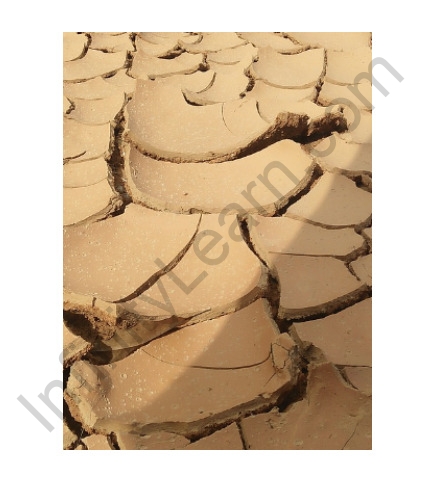Table of Contents
Introduction
Soil is the uppermost layer of the Earth’s crust, composed of a mixture of minerals, organic matter, water, air, and living organisms. It provides a medium for plant growth and plays a vital role in supporting ecosystems, agriculture, and various human activities.
Different types of soil
While soil can be classified into numerous types based on various criteria, one commonly used classification system categorizes soil into four main types of soil
Sandy Soil
Sandy soil is characterized by its large particle size and coarse texture. It has a gritty feel and drains water quickly due to its low water-holding capacity. Sandy soil is well-aerated but tends to have low fertility as nutrients easily leach away.

Clay Soil
Clay soil is composed of small, fine particles that give it a sticky and compact texture. It has high water-holding capacity but drains poorly, leading to waterlogging. Clay soil is often rich in nutrients but can be difficult to work with due to its tendency to become hard when dry and sticky when wet.

Silt Soil
Silt soil consists of medium-sized particles that are smaller than sand but larger than clay. It has good water-holding capacity and fertility, and its texture feels smooth and silky. Silt soil is susceptible to erosion and compaction.

Loam Soil
Loam soil is a balanced mixture of sand, silt, and clay, combining the best properties of each. It has moderate water-holding capacity, good drainage, and excellent fertility. Loam soil is often considered ideal for plant growth as it provides a suitable balance of water, air, and nutrients.

It’s important to note that these four soil types represent broad categories, and there can be variations within each type based on factors such as organic matter content, pH level, and regional conditions. Additionally, soils can also be classified based on their pH level, such as acidic soil, neutral soil, or alkaline soil. There are other type of soil also present. Such as:
Peat Soil
Peat soil consists of partially decomposed organic matter and is found in wetland areas. It is high in organic content but has poor drainage and low fertility.
Chalky Soil
Chalky soil contains a high percentage of calcium carbonate. It is alkaline and often found in areas with limestone bedrock.
Sandy Loam
Sandy loam is a combination of sand and loam soils. It has good drainage, adequate moisture retention, and is suitable for a wide range of plants.
Also Check
Conclusion
Soil provides a range of essential functions. It supports plant growth by supplying nutrients, water, and anchorage. It acts as a filter, purifying water as it passes through the soil layers. Soil plays a crucial role in regulating water balance, preventing floods and droughts. It also acts as a reservoir for carbon storage and helps in mitigating climate change. Additionally, soil provides habitat for a vast array of organisms, including bacteria, fungi, insects, and worms, contributing to overall biodiversity.
FAQs on Types of Soil
What are the different types of soil?
The different types of soil are sandy soil, clay soil, silt soil, and loam soil.
How is soil classified?
Soil is classified based on its composition and texture. It is categorized into different types based on the relative proportions of sand, silt, and clay particles present in it.
What is clay soil?
Clay soil is composed of very fine particles and has a smooth texture. It retains water well but drains slowly. It is nutrient rich but can become compacted and easily waterlogged. It is suitable for plants that can tolerate heavy and moist conditions.
What is silt soil?
Silt soil has medium-sized particles and a smooth texture. It retains water better than sandy soil but drains more quickly than clay soil. It is fertile and easy to work with, making it suitable for a wide range of plants.
What is loam soil?
Loam soil is a balanced mixture of sand, silt, and clay particles. It has good drainage and water holding capacity, as well as a balanced nutrient content. It is considered the ideal soil type for gardening, as it provides optimal conditions for plant growth.
Which type of soil is best for gardening?
Loam soil is generally considered the best soil type for gardening due to its balanced composition and texture, which provide good drainage, water retention, and nutrient availability for plants.
What are the characteristics of sandy soil?
Sandy soil is light and porous, allowing water to drain quickly. It is well-aerated, making it easy to work with, but it has low water and nutrient retention capacity. Sandy soil tends to be less fertile and requires frequent irrigation and nutrient supplementation.
How can I improve clay soil for better drainage?
To improve clay soil for better drainage, several techniques can be employed, including adding organic matter such as compost or well rotted manure to improve soil structure and aeration. Incorporating coarse sand or perlite can also enhance drainage. Additionally, avoiding over watering and implementing proper soil management practices like mulching can help prevent waterlogging in clay soil.








